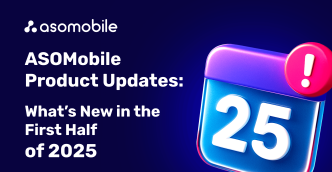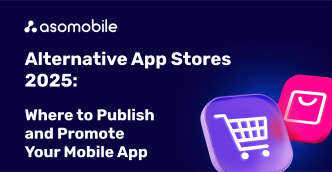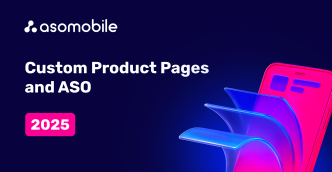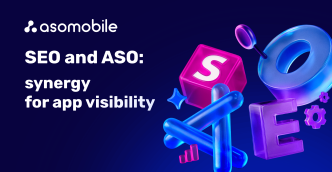Custom Store Listing in Google Play
A custom store listing in Google Play is our opportunity to personalize our app page for a specific target audience. In addition to visibility in the store, we need to appeal to users and differentiate ourselves from competitors. The competition, combined with the massive number of games and apps, makes this task a challenge for ASO specialists. But it’s a good thing that both we and Google Play are interested in the same thing – users searching, finding, and installing. That’s why the app store offers various tools for promoting and personalizing products based on user interests and needs.
In 2025, personalization is not just a trend, but an absolute necessity for mobile app growth. Millions of users, dozens of countries, hundreds of behavior patterns. How do we reach each one with the message that resonates? The answer – Custom Store Listing (CSL) in Google Play.
What is Custom Store Listing?
The Custom Store Listing tool allows us to create separate pages of our app that can be targeted at a specific audience. This helps communicate our product more clearly to the end user, positively affects install rates, and expands the visibility of our app. But let’s take it step by step.
Imagine a shop window that adapts to each visitor. That’s precisely what CSL does – an alternative version of the main app page explicitly created for a defined audience: by region, status, interests, or keywords.
This allows us to:
- Speak to users in their language (literally and figuratively)
- Show only relevant content
- Increase conversion without increasing budget
- Lower CPI in ad campaigns
CSL appeared back in 2020, but at that time, we could only create five pages. Today – up to 50 simultaneously. And each one can become a growth tool for us.
Our app page in the store serves as our primary traffic source. The elements we place on the page – a combination of visual design and textual metadata – work both for the store and the user. It’s our main asset, and now we can tailor it to be unique for each group of potential users.
Targeting in Custom Store Listing
Targeting is the heart of CSL. It defines who will see our custom page. Google Play offers five types of targeting, each suited to specific marketing and growth goals.
Localization
Custom pages are a great way to localize our page for the specific geos and languages of our potential users. What if we’re talking about countries that speak the same language, but we want to offer something localized for specific users in a particular region? For example, personalizing the app page for Bastille Day may be of interest only to part of our French audience, while French-speaking Swiss users will still see our base page.
User Status
In the targeting section, we can specify not only the country but also the user’s status. This allows us to address specific user categories:
- Inactive users – those who haven’t opened the app in a long time or deleted it
- Users in the pre-registration stage – those who signed up before the app’s release
New in 2025: Google now allows targeting inactive users (sometimes called “churned users”). These are individuals who previously installed our app but haven’t used it in a while or have deleted it. The system defines inactive users as those who downloaded the app more than 28 days ago and haven’t opened it in the last 28 days (or deleted it).
If we want to bring back users who left after the last update, we configure CSL with a focus on new features and motivation – we’ve changed and improved; try us again! This type of targeting is especially effective when paired with A/B tests for retargeting.
Integration with Google Ads
Now, consolidating our promotional efforts through advertising leads to more effective use of Google’s tools. By creating a special ad page, we link its URL to the ad campaign, making our message to users as specific and personalized as possible.
Integration with Google Ads lets us connect an ad campaign directly to the desired CSL. When a user clicks the ad, they land not on the general app page but on a specially created version with the same message as the ad.
Keyword Targeting in Search (New in 2025!)
We can now create pages that appear only when the user’s search query matches specific criteria. If the query matches a defined keyword, the user sees that specific CSL.
Case: Creating a custom page focused on a specific keyword. We create a CSL with a description and screenshots focused on the query “yoga for beginners.” This approach enables us to match user expectations better and increase conversions for our fitness app. The Google Play Console displays keyword suggestions and their variants, which we use to set up targeting.
Unique URL
We can create a unique link for each CSL. This is useful for external promotion channels. For example, we launch a partner campaign and provide partners with a separate CSL link with a promo code. This way, we track the traffic source and ensure a consistent message.
How does Google Play decide which page to show?
The display order depends on how we’ve set up targeting. One listing can target multiple criteria simultaneously – for example, inactive users in Canada or users searching specific keywords in the US. If a user matches multiple CSL conditions, Google Play shows the most exact and relevant version of the page.
The system prevents conflicts: the same country or region cannot be assigned to two different CSLs. This means we can’t target the US twice in separate listings – a country can only be linked to one CSL at a time.
Users who don’t fall under any CSL targeting will still see the default app page in Google Play.
Each custom page is tracked separately; we can view its performance directly in the Google Play Console, comparing conversion, CTR, and effectiveness by region or ad source. Google has simplified CSL management by consolidating the main listing and all custom pages into a single interface.
Necessary: CSL does not modify the APK or AAB file of the app — it only changes the appearance in the store. All installs lead to the same app package. This gives us flexibility without affecting the technical part of the product.
To simplify work with global campaigns, Google offers CSL groups. If we launch a campaign in several countries where only the language differs, we can combine the pages into one group. Any text or visual set at the group level automatically updates in all pages in that group. This saves time and reduces the risk of error.
What can be customized?
On each custom page, we can change almost everything:
- App name
- Short and full description
- Icon
- Screenshots
- Video preview
- Feature graphic
The only things that remain unchanged are the category, developer name, and privacy policy.
Therefore, all rules and approaches for ASO optimization on Google Play also apply to Custom Store Listings. We’ll work with semantics, collect a pool of relevant keywords, and use them in metadata. We remind you that collecting a semantic core and forming text fields is easier and more effective using mobile analytics tools from ASOMobile.
How to create a Custom Store Listing?
Google Play Console placed the creation of custom pages under the Grow tab – Store Presence. This already hints at the core idea and purpose of using Custom Store Listings.
So, we create our CSL by coming up with a name – this is internal info only, it has no functional meaning for the store. The first step is to define targeting, which, as we’ve said, can be based on country, region, or user status. Another option is a Google Ads campaign or a direct URL link.
Next, we load the metadata of our alternative page - all text and visual elements. Since we can create up to 50 unique pages, managing so many options can seem complicated, so dividing into groups by season, geography, or other criteria will make our lives much more manageable.
Important: A CSL is only visible if the user's device matches the set conditions. That means proper targeting is the key to success.
What’s new: AI Gemini and text automation
In 2025, Google introduced an experimental Gemini AI feature in Play Console that helps automatically generate text for CSL. All we need is to choose a theme (e.g., season or promotion), communication tone, and audience. AI provides an English-language description, which we can adapt for localization needs.
This is especially helpful when launching many pages at once and wanting to test hypotheses quickly.
The tool is available only in English for now, but even that offers substantial support, especially when the custom page plan is broad and time is short.
When creating an experiment, we specify the theme, mood (or tone of voice), and audience. The theme can be seasonal or anything else – like Christmas, New Year, Thanksgiving, etc. We can speak to our users formally or informally, like a colleague or a supportive friend – this depends on the audience and the nature of our app.
In the target audience section, we choose the user status – new, inactive, or existing. Now we let AI show its power – we create the page, tweak the results, and add the custom page to the console.
Practical use cases of CSL
1. Campaign to return inactive users.
Players in Korea stopped launching the app? Create a CSL with new content and the message “Come back – get a bonus!”
2. Pre-launch.
Our app isn’t yet available in India but will be soon? Set up a CSL with “Coming soon in India” and pre-registration option.
3. Language split.
Spanish-speaking users in Latin America see different content than those in Spain. Create a LatAm CSL with local references and screenshots.
4. A/B testing through CSL.
Main page allows only 5 simultaneous experiments. But CSLs allow 5 per each of 50 pages. That’s over 250 parallel tests.
5. Promo links with unique messages.
Running an email campaign? Provide a link to a special CSL with a limited-time offer. The user doesn’t just land on Play Store – they see a personalized experience.
Conclusion
Custom Store Listing is our chance to personalize every user interaction. In 2025, the tool became even more flexible and powerful: keyword targeting, strong Google Ads integration, and AI automation.
By creating pages for different segments, we increase not only visibility but also trust. And that is the key condition for growth in a highly competitive environment.
Use ASOMobile to select keywords and create texts. It will save time and help find the phrases users are actually searching for.
 Українська
Українська  Русский
Русский  Español
Español 






